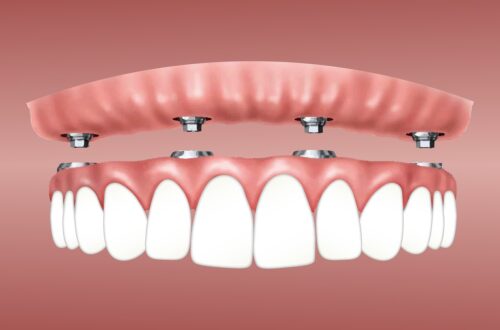Beyond the Surface: How Physiotherapy Plays a Vital Role in Scar Treatment
Welcome to a world beyond the surface of scar treatment, where the healing power of physiotherapy takes center stage. Beyond the conventional methods of creams and ointments lies a multifaceted approach that not only addresses the physical aspects of scars but also delves into the emotional and functional aspects of recovery. In this dynamic field, physiotherapy emerges as a vital player, offering a holistic and individualized approach to scar treatment. By combining specialized techniques, exercises, and manual therapy, physiotherapists are able to promote tissue regeneration, improve mobility, and restore confidence in individuals who have experienced trauma to their skin. Join us as we explore the transformative role of physiotherapy in scar treatment, uncovering the untold stories of resilience, restoration, and the incredible potential of the human body. Get ready to go beyond the surface and discover a world where scars become a testament to strength, rather than a reminder of pain.
Understanding the role of physiotherapy in scar treatment
Scars are not just physical marks; they can have a profound impact on a person’s physical and emotional well-being. Physiotherapy plays a crucial role in scar treatment by addressing the various aspects of healing. While creams and ointments may provide temporary relief, physiotherapy takes a comprehensive approach to promote long-term recovery.
Physiotherapists understand that scar can cause tissue tightness, reduced range of motion, and muscle weakness. Through a combination of manual therapy and exercises, they aim to improve tissue flexibility, increase strength, and restore normal function. Additionally, physiotherapy can help reduce pain and discomfort associated with scars, allowing individuals to regain confidence and engage in daily activities without limitations.
Physiotherapists also recognize the emotional impact of scars. They provide support and guidance to individuals, helping them navigate the psychological challenges that may arise from their appearance. By addressing both the physical and emotional aspects of scars, physiotherapy offers a comprehensive approach to healing and recovery.
The healing process of scars
Before delving into the techniques used in physiotherapy for scar treatment, it is important to understand the natural healing process of scars. When the skin is injured, the body initiates a complex series of events to repair the damage. Initially, there is an inflammatory response, which involves the release of various chemicals to promote clotting and initiate the formation of new tissue.
Over time, the body remodels the newly formed tissue, gradually replacing it with stronger collagen fibers. However, this remodeling process can sometimes result in the formation of excessive scar tissue, leading to functional and aesthetic concerns. This is where physiotherapy plays a vital role in guiding the healing process and optimizing the final outcome.
Techniques used in physiotherapy for scar treatment
Physiotherapy employs a range of techniques to effectively manage scars. One commonly used technique is manual therapy, which involves the application of hands-on techniques to manipulate scar tissue. This can include massage, myofascial release, and scar mobilization. By applying controlled pressure and stretching movements, physiotherapists can help break down scar tissue adhesions, improve blood flow, and promote tissue flexibility.
Another technique utilized in physiotherapy for scar treatment is therapeutic exercises. These exercises are specifically designed to target the affected area, improving strength, range of motion, and functional abilities. Physiotherapists may incorporate stretching exercises, resistance training, and proprioceptive exercises to enhance the healing process.
In addition to manual therapy and exercises, physiotherapy may also utilize modalities such as ultrasound, electrical stimulation, and laser therapy. These modalities can help reduce pain, inflammation, and promote tissue regeneration.
Benefits of physiotherapy in scar treatment
The benefits of physiotherapy in scar treatment are numerous and extend beyond physical healing. Physiotherapy can significantly reduce scar tissue tightness, improving flexibility and mobility. This can have a direct impact on an individual’s ability to perform daily activities and participate in recreational or occupational pursuits.
Physiotherapy also plays a crucial role in scar management by reducing pain and discomfort. Scar tissue can sometimes lead to nerve impingement or hypersensitivity, causing pain and sensitivity in the affected area. Through specialized techniques and modalities, physiotherapists can alleviate pain, allowing individuals to regain comfort and confidence in their bodies.
Furthermore, physiotherapy helps individuals regain their sense of control and body awareness. By actively participating in their own recovery, individuals become empowered and develop a greater understanding of their bodies. This can lead to improved self-esteem and an enhanced quality of life.
Case studies showcasing the effectiveness of physiotherapy in scar treatment
To further illustrate the transformative role of physiotherapy in scar treatment, let us explore some case studies that highlight its effectiveness. These real-life stories showcase the positive outcomes achieved through physiotherapy interventions and provide a glimpse into the potential for healing and restoration.
Case Study 1: Sarah, a 25-year-old professional dancer, sustained a deep laceration on her leg during a performance. The resulting scar restricted her range of motion and caused pain during dance rehearsals. After undergoing a personalized physiotherapy program that included manual therapy and targeted exercises, Sarah experienced a significant improvement in her range of motion and reduction in pain. She was able to resume her dance career without limitations, and her scar became a symbol of her resilience and determination.
Case Study 2: Mark, a 40-year-old construction worker, had a traumatic injury to his hand, resulting in extensive scarring. The scar tissue caused stiffness and weakness, limiting his ability to grip and handle tools. Through a combination of scar mobilization techniques, therapeutic exercises, and modalities such as electrical stimulation, Mark regained full strength and function in his hand. He returned to work with confidence, and his scar became a reminder of his journey to recovery.
These case studies demonstrate the individualized and transformative nature of physiotherapy in scar treatment. By addressing the specific needs and goals of each individual, physiotherapists can facilitate remarkable recoveries and empower individuals to embrace their scars as symbols of strength and resilience.
Complementary treatments to enhance the results of physiotherapy
While physiotherapy plays a central role in scar treatment, there are complementary treatments that can enhance its effectiveness. One such treatment is scar massage, which individuals can perform themselves or with the guidance of a physiotherapist. Scar massage involves gently applying pressure and circular motions to the scarred area to promote tissue mobility and reduce adhesions.
Another complementary treatment is silicone gel or sheeting. These products create a protective barrier over the scar, reducing friction and preventing excessive moisture loss. Silicone has been shown to improve scar appearance and texture when used consistently over time.
Additionally, proper nutrition and hydration are essential for scar healing. A balanced diet rich in vitamins, minerals, and protein provides the building blocks necessary for tissue regeneration. Staying well-hydrated ensures optimal tissue hydration, allowing for improved healing and scar remodeling.
Finding the right physiotherapist for scar treatment
When seeking physiotherapy for scar treatment, it is important to find a qualified and experienced physiotherapist who specializes in scar management. Look for physiotherapists who have advanced training in scar treatment and are knowledgeable about the latest techniques and research in the field.
To find the right physiotherapist, consider asking for recommendations from healthcare professionals, reading online reviews, and scheduling consultations to discuss your specific needs and goals. It is crucial to find a physiotherapist who listens to your concerns, develops a personalized treatment plan, and provides ongoing support throughout the healing journey.
Frequently asked questions about physiotherapy in scar treatment
Q: How long does it take for physiotherapy to show results in scar treatment?
A: The duration of physiotherapy treatment for scar management varies depending on the individual and the severity of the scar. Some individuals may experience improvements within a few weeks, while others may require several months of treatment. Consistency and adherence to the recommended treatment plan are key factors in achieving optimal results.
Q: Does physiotherapy work for all types of scars?
A: Physiotherapy can be beneficial for various types of scars, including surgical scars, burn scars, and traumatic scars. However, the effectiveness of physiotherapy may depend on factors such as scar location, scar maturity, and individual response to treatment. A thorough assessment by a physiotherapist will determine the most appropriate treatment approach for a specific scar.
Q: Is physiotherapy painful during scar treatment?
A: Physiotherapy for scar treatment should not be painful. While some techniques may involve mild discomfort or pressure, a skilled physiotherapist will ensure that the treatment is within a tolerable range. Open communication with the physiotherapist is essential to ensure that the treatment is comfortable and effective.
Q: Can physiotherapy completely remove scars?
A: Physiotherapy cannot completely remove scars, as scars are a natural part of the healing process. However, physiotherapy can significantly improve scar appearance, texture, and function. The goal of physiotherapy is to optimize scar healing and help individuals regain confidence and functionality in the affected area.
Conclusion and final thoughts
Physiotherapy offers a transformative approach to scar treatment, going beyond the surface to address the physical, emotional, and functional aspects of scars. Through specialized techniques, exercises, and manual therapy, physiotherapists promote tissue regeneration, improve mobility, and restore confidence in individuals who have experienced trauma to their skin. With a holistic and individualized approach, physiotherapy allows individuals to embrace their scars as symbols of strength and resilience. So, let us go beyond the surface and discover the incredible potential of the human body in scar treatment.

